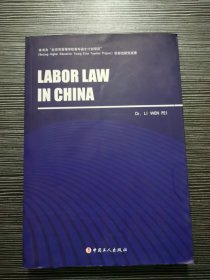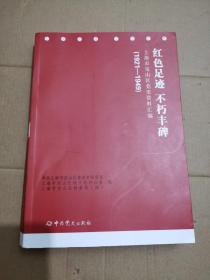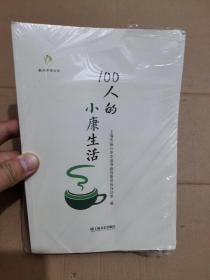
中国劳动法律制度
¥ 15 2.2折 ¥ 68 八五品
仅1件
上海宝山
认证卖家担保交易快速发货售后保障
作者李文沛 著
出版社中国工人出版社
出版时间2015-07
版次1
装帧平装
货号J4
上书时间2024-12-12
- 在售商品 暂无
- 平均发货时间 5小时
- 好评率 暂无
- 最新上架
商品详情
- 品相描述:八五品
图书标准信息
- 作者 李文沛 著
- 出版社 中国工人出版社
- 出版时间 2015-07
- 版次 1
- ISBN 9787500861225
- 定价 68.00元
- 装帧 平装
- 开本 16开
- 纸张 胶版纸
- 页数 353页
- 字数 300千字
- 正文语种 英语
- 【内容简介】
-
Labor Law in China is the first English book published in China that focuses on the Chinese labor law. It is a result of the Betjin,g higher education, young eLite teacher project. Filling in a key gap of research, the book covers the Chinese labor law system in following four fields: general principles, labor relation, labor standards law, and labor security law.
The development of a title explaining the Chinese labor law system has two purposes:
On one hand, I happened to join the Legal Department of China Institute of Industrial Relations after completing my PhD program in the International Law School of China University of Political Science and Law. The job forced me to enter a new field of study: international law and labor law combined. At the time, China had just seen major progress in labor law legislation, with the Labor Contract Law, the Employment Promotion Law, and Labor Dispute Mediation and Arbitration Law promulgated in 2007.ln practice, a lot of cases involving the protection of labor interests took place. Overseas researchers began to notice labor law research in China. I caught up with the trend. In the combined field of international law and labor law, I found that there was almost no research at all. The crossroads of international law and labor law happened to be a virgin land. What should be the first priority when studying labor law in China using an international perspective? I thought a good approach would be combining introduction of foreign research and going out to talk with foreign colleagues on an equal footing. This combined approach may ensure good communication and comprehensive coverage. Therefore, the project for the present book was done in order to provide useful references for researchers home and aboard and enhance labor law research in China by using an international perspective.
On the other hand, The Chinese umversities have been upgrading legal education in recent years, a process whereby courses have been taught in the English language and the students have been encouraged to explain the Chinese experience in English too. Interested overseas students have been introduced to the latest development of Chinese legal practice. Cuhivating international legal experts has been part of the goal of this education upgrade. Therefore, this English text is to fill in the gap whereby no English textbook exists in the chinese labor law field. It is part of the labor law education upgrade in China.
The book was written in five years between 2010 and 2014. I was busy and got distracted by many things, including promotions, birth of the child, relocation, etc. The many things produced good results, though distracting my writing effort.. However, I was lucky to have completed the book, thanks to support by my family, mentors, and friends, and due to the limited space I cannot list all the names in here. I dedicate my book to all the people who have cared for and supported me along this tremendous journey.
Finally , I would like to beg for your help in identifying any mistake or omission in the text as you peruse, because in this book I am discussing a new research field of which I have only limited knowledge. Thank you for your help and guidance. - 【作者简介】
- 李文沛,中国政法大学国际法学博士,中国劳动关系学院法学系副教授。现已出版专著-部,译著-部,发表论文30余篇。
- 【目录】
-
Chapter One.Labor Law: General Principles
1.Definition
2.Basic Characteristics of Labor Law
3.Basic Principles of Labor Law
4.Main Contents of Labor Law System
Chapter Two.Labor Contract Law
1.Overview
2.Conclusion of Labour Contract
3.Performance and Alteration of Labor Contract
4.Dissolution and Termination of Labor Contract
5.Labor Dispatch and Non - full - time Labor
Chapter Three.Law of Collective Agreement
1.Descriptions of Collective Agreement
2.Conclusion of Collective Agreement
3.Application of Collective Agreement
4.Union Laws and Regulations
Chapter Four.Internal Labor Bylaws of Employer
1.Overview of Internal Labor Bylaws of Employer
2.Legislation Position of Labor Bylaws of Employer
3.Formulation of Labor Bylaws of Employer
4.Legal Force of Labor Bylaws of Employer
5.Labor Discipline
Chapter Five.Law on Democratic Management of Workers
1.Summary of Democratic Management of Workers
2.System of Workers Congress
3.Democratic Management of Workers in Other Forms
Chapter Six.Law for Settlement of Labor Dispute
1.Summary of Labor Dispute Settlement
2.Negotiation and Mediation of Labor Dispute
3.Arbitration of Labor Disputes
4.Labor Dispute Litigation
5.Settlement of Collective Contract Dispute
Chapter Seven.Legal System of Wage
1.Overview of Wage Legislation
2.Composition and Basic Forms of Wage
3.Basic Wage System
4.Minimum Wage System
5.Guarantee System of Wage Payment
Chapter Eight.Legal System of Work Time
1.Overview of Work Time Legislation
2.Work Time System
3.Rest and Vacation System
4.Other Leaves
5.Work Time Extension and Restrictions
Chapter Nine.Occupational Safety and Health System
l.Summary
2.Occupational Safety and Health Specifications
3.Occupational Safety and Health Management System
4.Special Protection System for Female and Juvenile Workers
Chapter Ten.Labor Supervision and Inspection
1.Summary of Labor Supervision and Inspection
2.Labor Supervision System
3.Trade Union Supervision
4.Legal Responsibilities for Violating the Labor Law
Chapter Eleven.Employment Promotion Law
1.Summary
2.Guidelines and Government Liability for Employment
3.Forms of Getting Employed
4.Main Measures of Employment Promotion by the Government
5.Employment Security of Special Employment Groups
Chapter Twelve.Social Security Law
1.Overview
2.Introduction
3.Pension Insurance System
4.Medicallnsurance
5.Unemployment Insurance
6.Work - related Injury Insurance
7.Maternity Insurance
Chapter Thirteen.Occupational Welfare Law
1.Overview of Occupational Welfare Law
2.OccupationalWelfare Division
3.Occupational Welfare Fund
4.Classification of Occupational Welfare
References
点击展开
点击收起
— 没有更多了 —


















以下为对购买帮助不大的评价